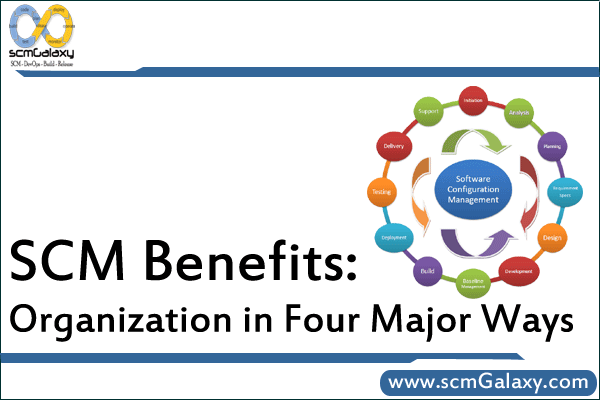

SCM benefits an organization in four areas: control, management, cost savings, and quality. These four benefits are mapped to an organization’s overall goals and objectives when the decisions are made to bring a SCM tool in-house. The features of a SCM tool further support these benefits.
SCM Benefits the Organization in Four Major Ways
Control
Control in SCM provides the ability to review, approve, and incorporate changes into a configuration item. There must be one controlling SCM tool so that there is only one set of training, license management, installation, and user procedures. All project personnel use the tool. Inherent in the tool is a standardized, measurable process for change. Integrity maintenance of CIs is enforced throughout the product life cycle. The tool permits only controlled change to the baseline CIs, and all changes are tracked.
Management
Management in SCM is concerned with the automation of identifying and guiding configuration items through their life cycle to final assembly as part of product and delivery. Identification of CIs through a unique naming convention allows version, release, update, and full change tracking. Baselining of CIs with the ability to produce product deltas from the baseline satisfies requirement and schedule changes along with product family support. Rapid reviews and audits of CIs are accomplished through the analysis of historic information collected. Project status reporting is accomplished in a clear and consistent format based on SCM collected information on all CIs under configuration management.
Cost Savings
Cost savings are realized across the entire product development life cycle with SCM. Maintaining product integrity through defined, tracked, and audited CIs provides a managed bill of materials for the product released to customers. Cost savings scale with SCM use and application across applications. This scaling is dependent on the depth of control needed for each application product release tree. Deep combinations for product families can be analyzed for risk exposure and cost savings directly impacted by the amount of configuration management applied. Side effects are reduced through controlled change by understanding the impact on all versions and releases. Accurate and repeatable release control is produced in a repeatable fashion over entire product families for all customers and users.
Quality
Software development is a people-intensive activity, and quality must be considered at every person-to-tool interface. Ensuring a high-quality work environment must address the process of building software products in an automated fashion. This must include tracking CIs to the tools that produced them and the clients that ultimately receive the product. Measuring the end product to ensure high quality is done through tracking the changes made to a product throughout its life cycle. Repeatable management and change control in a documented and measured fashion allows accurate estimation of future efforts. Quality is an ongoing process. The lessons learned in one product must be transferred to new, related products and entire product families.
- How to remove sensitive warning from ms office powerpoint - July 14, 2024
- AIOps and DevOps: A Powerful Duo for Modern IT Operations - July 14, 2024
- Leveraging DevOps and AI Together: Benefits and Synergies - July 14, 2024

